Archive for October, 2018
Egyptian Dialect vs. MSA Posted by Ibnulyemen اِبْنُ اليَمَن on Oct 31, 2018
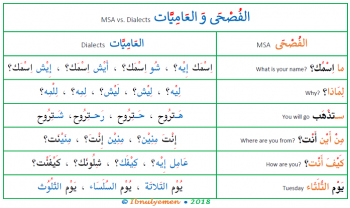
In this post, we will listen to a recent song by a spectacular Egyptian singer, Sherine Abdel-Wahab. Using the lyrics of this song, we will examine some of the actual linguistic differences between Egyptian dialect and Modern Standard Arabic. The song is called is called حُبُه جَنَّة ‘his love is heaven’, and it is taken…
Origins of Islamic Political Ideology Posted by Ibnulyemen اِبْنُ اليَمَن on Oct 26, 2018

Following the death مَوْت of Prophet النَّبِي Mohammed (PBUH), there was never a discord about the essence of Islam. The pillars of Islam أَرْكَانُ الإِسْلام, the Quran القُرْآن, the matters of worship, and all other principles that guided and organized Muslims’ lives were all incontrovertible. Political conflicts الاِخْتِلافَات السِّيَاسِيَّة, however, began to emerge. These differences…
Arabic Attached Pronouns Posted by Ibnulyemen اِبْنُ اليَمَن on Oct 23, 2018
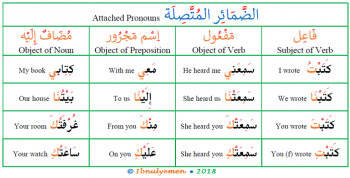
الضَّمِيْر ‘the pronoun’ in Arabic is either overt or covert. The covert is called مُسْتَتِر, and it is neither written nor pronounced. The overt is called ظَاهِر, and it can be separate مُنْفَصِل or attached مُتَّصِل. This post is primarily about the attached pronouns in Arabic. الضَّمِيْرُ المُنْفَصِل The Separate Pronoun: الضَّمِيْر المُنْفَصِل ‘the separate…
Adjective Agreement in Arabic Posted by Ibnulyemen اِبْنُ اليَمَن on Oct 18, 2018
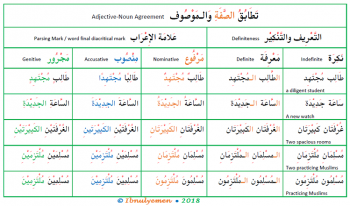
An adjective is word that describes a noun. In Arabic it is called صِفَة (or نَعْت). It follows the noun, and it must agree with it in definiteness (i.e. نَكِرَة or مَعْرِفَة), number (i.e. مُفْرَد, مُثَنَّى, or جَمْع), gender (i.e. مُذَكَّر or مُؤَنَّث), and case (i.e. مَرْفُوع, مَنْصُوب, or مَجْرُور). This post is about the…
Arabic Demonstrative Pronouns Posted by Ibnulyemen اِبْنُ اليَمَن on Oct 17, 2018
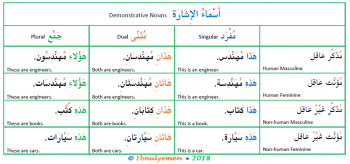
Generally, demonstrative pronouns are words like ‘this’ and ‘that’. In Arabic, they are called ‘demonstrative nouns’ أَسْمَاءُ الإشَارَة. A demonstrative noun by itself is an ambiguous word until defined by a subsequent word. As regards gender, a demonstrative pronoun is either masculine or feminine. As for number, it is either singular, dual, or plural. As…
Some Insights into Arabic Verb Usage (2) Posted by Ibnulyemen اِبْنُ اليَمَن on Oct 11, 2018
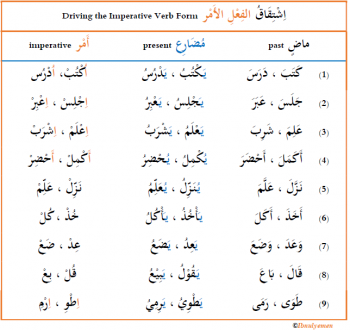
In an earlier post, we looked at how intransitive verbs are made transitive and vice versa. This is done by adding or dropping a letter or letters to the basic verb. A verb like نَزَلَ ‘to get down’ is made transitive in two ways: adding hamzah or doubling the middle letter, hence أَنْزَل or نَزَّلَ…


